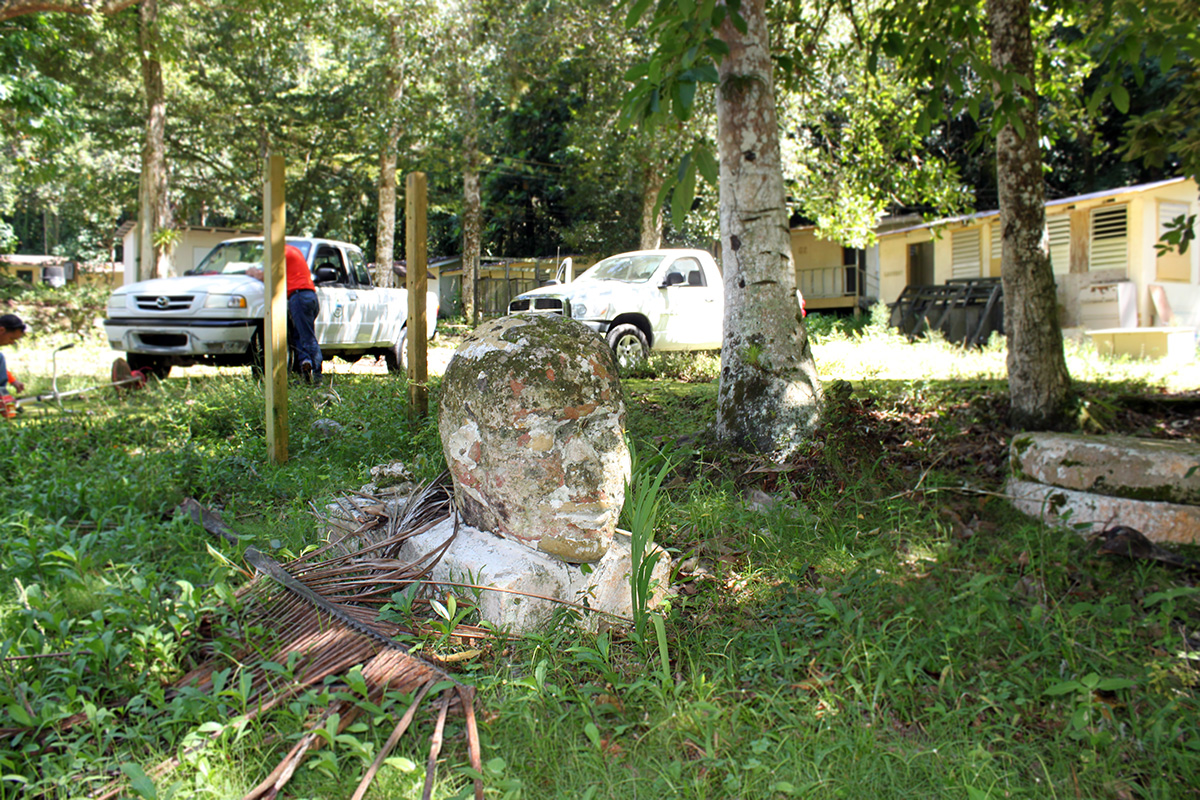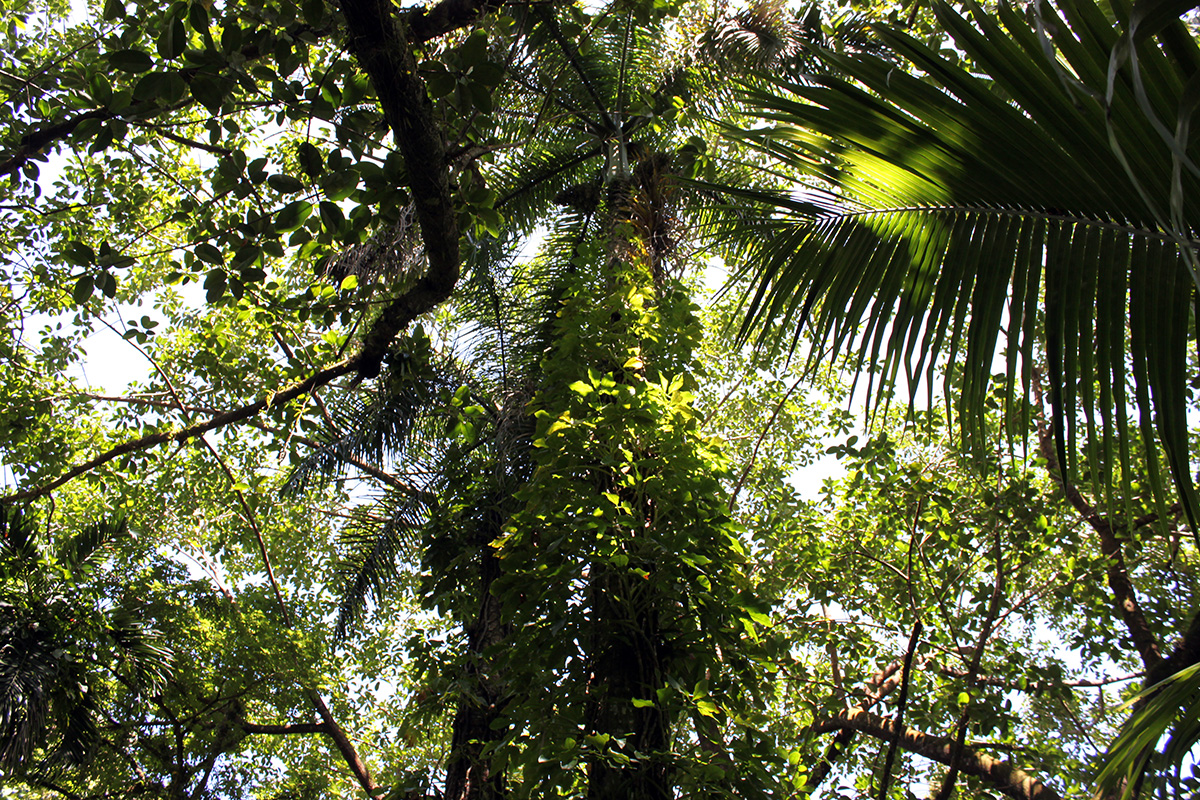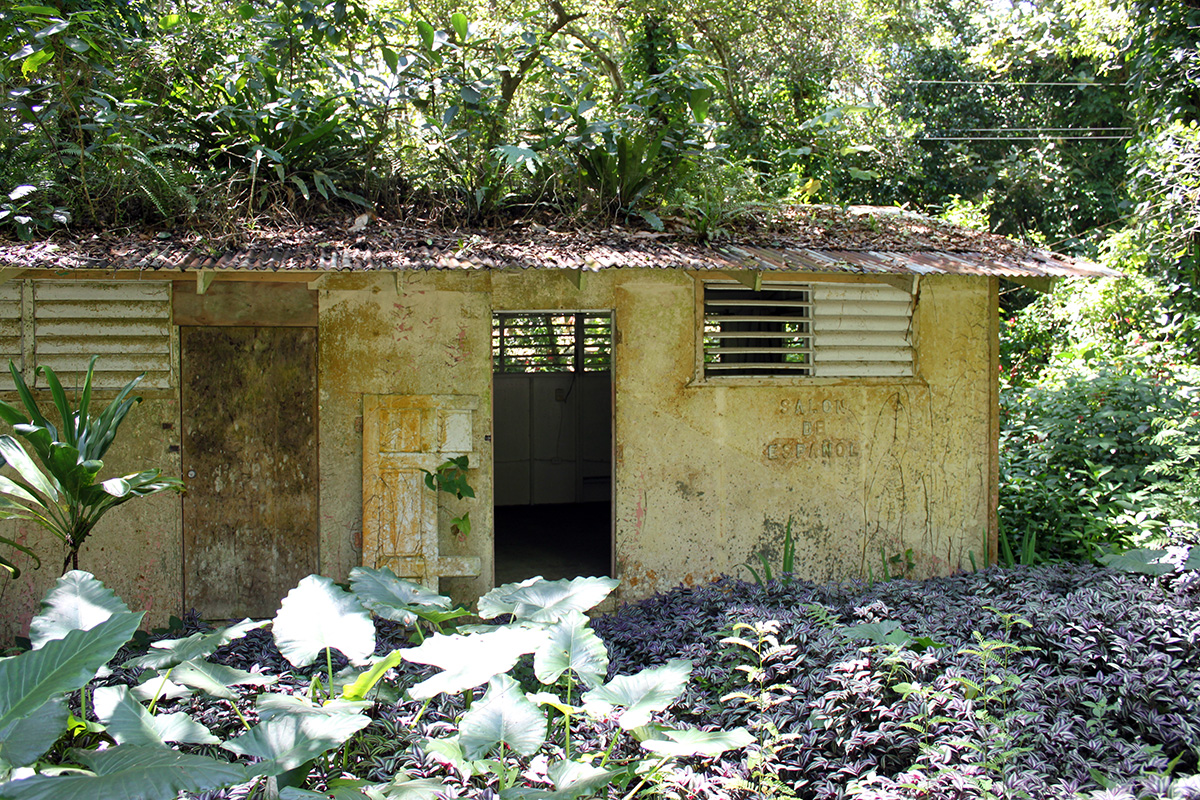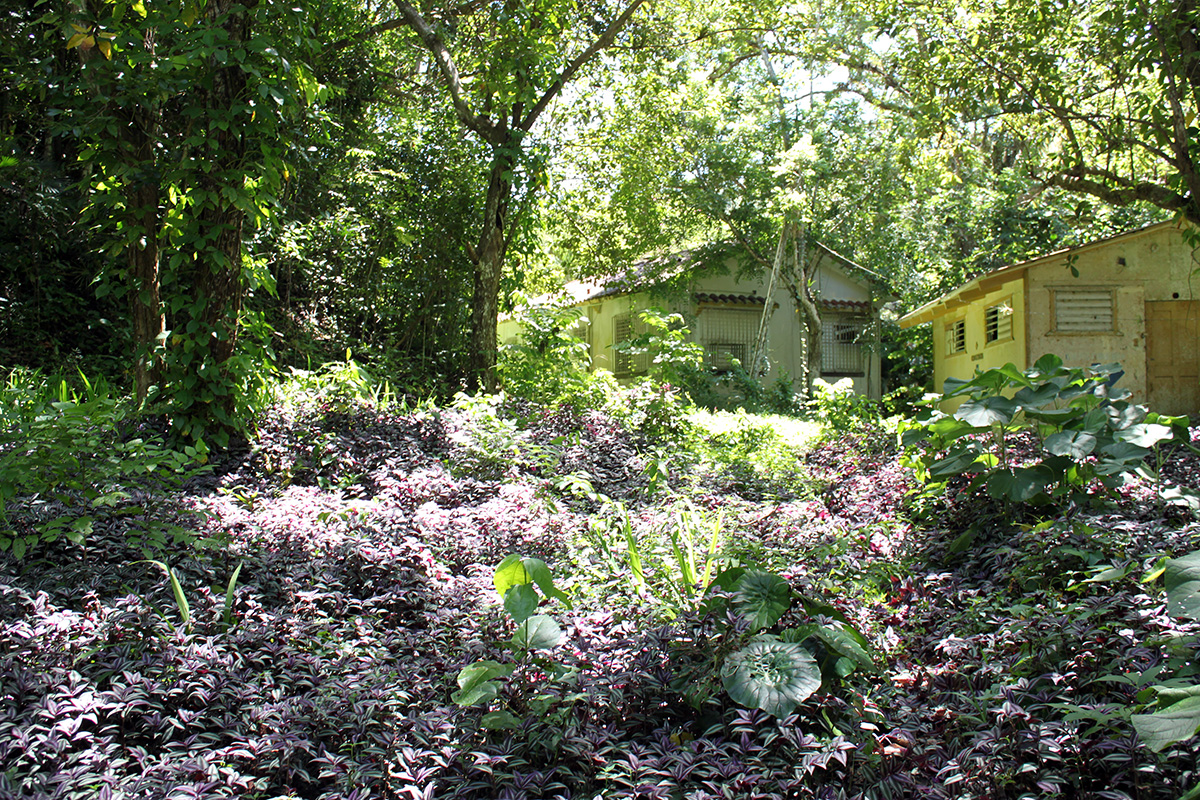Katia Avilés-Vázquez ’99, at the entrance of Rio Abajo state park.
A quote from an ESF professor has guided Katia Avilés-Vázquez through her professional and personal life.
“Anyone can climb the highest mountain,” Dr. Robin Kimmerer once said, “as long as they do it at their own pace.”
“When things are tough in both my job and life, I always think back at that quote knowing that with patience and perseverance, any challenge is obtainable,” said Avilés-Vázquez, a 1999 environmental science graduate who today is executive director of the Oficina del Bosque Modelo de Puerto Rico (Model Forest of Puerto Rico Office).
Avilés-Vázquez arrived at ESF in the summer of 1996 having never seen the college in person. “I found the college online,” she said.
“Coming to Upstate New York was a big shock for me as it was the first time I ever really had to speak English,” she said, “and I had never left the island of Puerto Rico before.” Avilés-Vázquez credits the pre-orientation program for helping her acclimate to her new environment.
“If it weren’t for the pre-orientation program and its dedicated staff and student mentors, I probably would’ve returned to Puerto Rico within a week of arriving,” said Avilés-Vázquez. Instead, she earned her bachelor’s degree in three years.
“One thing I loved about ESF was that you are immersed immediately in the classes that directly pertain to your major,” she said. Her summer at Cranberry Lake Biological Station was one of her favorite ESF experiences. While at Cranberry Lake, Avilés-Vázquez had the opportunity to see Kimmerer in action during her botany classes.
Along with Kimmerer’s influence, Avilés-Vázquez said, classes with Associate Professor Emmanuel Carter (landscape architecture) and retired professors Peter Black (water and related land resources) and William Shields (biology) were among her favorite courses at ESF.
After graduating ESF, Avilés-Vázquez earned a master’s degree in resource ecology and management from the University of Michigan and a Ph.D. from the University of Texas.
Share
“Anyone can climb the highest mountain, as long as they do it at their own pace.” – Dr. Robin Kimmerer
View of the Lago Dos Bocas valley in the municipal of Utuado, Puerto Rico.
The Bosque Modelo initiative in Puerto Rico is part of a global network born from the conflict between loggers and local Canadian communities in the early 1990s. The concept combines the social, cultural and economic needs of local communities with the long-term sustainability of large landscapes in which forests are an important feature. The Model Forest of Puerto Rico began as a grassroots initiative in 2007 with Bosque Modelo de las Tierras Adjuntas. In a 2014 victory for community organizations, the Puerto Rican government adopted the sustainability and landscape management principles of the Modelo Forests, created a temporary government office for administrative purposes and expanded the Model Forest to 31 munipalities, including 26 Natural Protected Areas and more than 7,000 farms. Soon after, Avilés-Vázquez was chosen as executive director to oversee implementation and program transition to a community-based private trust that will manage and set management and investment priorities for the Model Forest of Puerto Rico. In addition to her position with Bosque Modelo, she also teaches in the Department of Geography at the University of Puerto Rico – Río Piedras Campus and runs a research program on urban community gardens with the Metropolitan University’s Center for Sustainable Development Studies.
The model forest, an action area where the office promotes sustainable management initiatives, covers almost 390,000 acres of the western end of the island. It expands from the dense forest cover of the central mountain region to the coastal forests north and south of the island, connecting 26 protected natural areas, and dozens of community initiatives occurring within the system.
Photo slideshow of Campamento Crozier
One such initiative is the project Eco-Hospedería El Cantar de Río Abajo located in Río Abajo State Park in the municipalities of Arecibo and Utuado. The project is housed within the old Campamento Crozier, constructed by the Peace Corps in the late 1960s. The camp served as a training center for Peace Corps volunteers before they headed to destinations in Latin America and Africa. Since then, the camp has fallen into disrepair. As part of the Model Forest, Avilés-Vázquez collaborated with community leaders from Arecibo and Utuado to generate a community-based activities program, renovate the site and use the campgrounds as an ecotourism destination.
One of the challenges Avilés-Vázquez faces is dealing with Puerto Rico’s debt crisis and its effects on the Bosque Modelo initiative.
“There is so much the Model Forest can offer the communities within its footprint and the island-wide landscape management and conservation efforts,” she said. “However lack of support from government for an initiative aimed at combating decades of disinvestment and outmigration make it very hard to break the cycle of abandonment and unplanned resource exploitation.”
But as Kimmerer instilled in Avilés-Vázquez, any challenge can be resolved with the right amount of perseverance. She is confident the program will succeed to the benefit of all stakeholders within the Model Forest.









